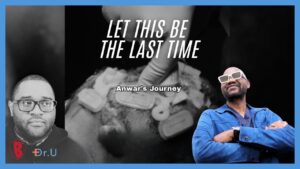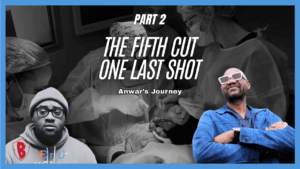Hair loss creates enormous stress and inner turmoil for many individuals. Although most cases of thinning and balding can now be resolved through surgery, the average cost of these medical procedures drives sufferers to seek cheaper forms of hair transplantation. This demand has culminated in what is now referred to as the FUE hair transplant black market. These operations are typically performed in other countries by unlicensed staff members or technicians who don’t have a medical background. As a result, patients who opt for these procedures face enormous risks of compromising their health and safety.
While stricter government regulations have yet to come into full fruition through legislation, Dr.U believes that the immediate need to enforce better inpatient care standards can feasibly be met through actions taken by global membership-based organizations such as the ISHRS (International Society of Hair Restoration Surgeons).
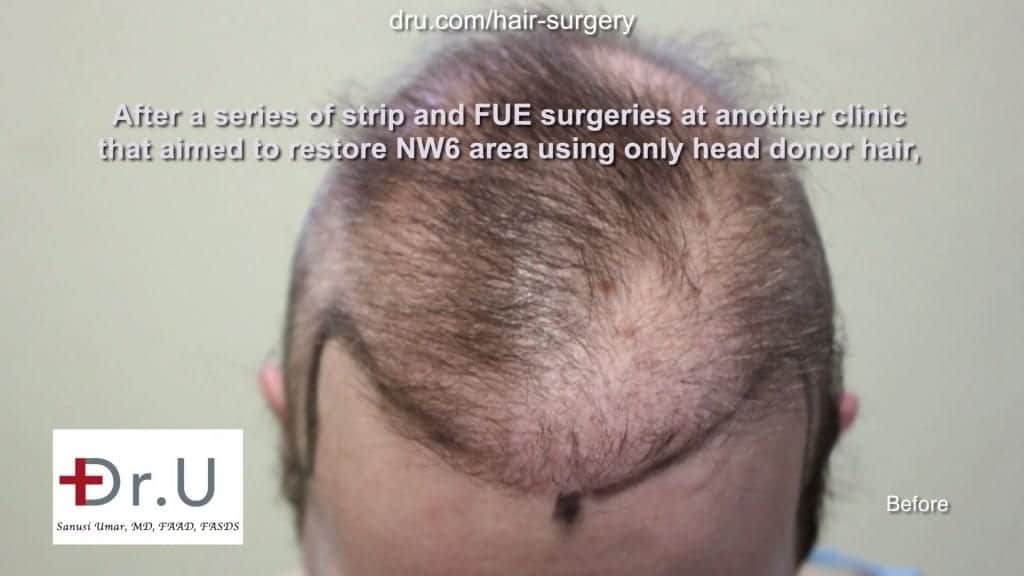
Hair Transplant Black Market Attempts To Lure Patients Worldwide Through Cheap Procedures
Numerous clinics worldwide offer hair transplant procedures priced far below the standard surgery costs. Moreover, compared to the average cost of surgery in the United States and European countries, black market providers in many other countries tempt fretful hair loss sufferers through aggressive low pricing and hawking.
A clinic is considered a part of the hair transplant black market if non-licensed practitioners and individuals perform its procedures without medical training. Unfortunately, these so-called technicians have often included desperate refugees and other types of unskilled laborers, such as cab drivers.
These illegal pirate clinics often promise guaranteed results using professional-looking websites and social media accounts to showcase testimonials and often doctored before and after photos.
In Turkey, where about 60,000 hair restoration procedures are performed each year, Syrian refugees are paid the lowest wages possible to perform these surgeries while being forced to work long hours, practically non-stop throughout the week, performing hair transplantation through assembly-line processes.
They are often willing to accept deplorable working conditions and make enough money to survive. The hiring clinics would claim that a medical doctor oversees these procedures. However, it is often the case that a single doctor is assigned to supervise 50 surgeries at once. It is impossible to closely monitor all team members involved directly in the extractions, slit creation processes, and insertions of the hair transplant grafts. A lot could go wrong under these conditions.
Patients must understand that for hair transplants to be offered at such low price points, significant corners must be cut. This dramatically widens opportunities for egregious errors to occur. Typical botched outcomes often include poor growth, unnatural hair directions, donor overharvesting, scarring, infection, pitting, and cobblestoning on the scalp. And while victims of low-cost hair restorations initially thought they were saving money, these results can often require additional surgical procedures to repair mistakes that should not have happened in the first place.
Although Turkish law mandates that doctors perform hair transplants, there are various ways to bypass this fundamental requirement. For one, actual nurses and medical technicians who have been performing these procedures for years do not need as much oversight. And also, it is a common practice for clinics to offer bribes to inspectors to disclose the actual dates of their visits. During this time- frame only, these establishments work to ensure that all legal standards are met to pass their inspection.
The ISHRS currently has a committee devoted to the issue of the unlicensed practice of medicine. Now, the organization urges prospective patients to research their providers thoroughly to understand the qualifications and level of involvement of the doctors they choose for their procedures.
ISHRS president Dr.Tykocinski urges patients to educate themselves through resources available on the organization’s site and become aware of the risks involved with black market hair transplant providers and the regulations and laws within the country they are considering when traveling abroad for their surgery.
Dr. U’s Recommendations For ISHRS Involvement in Curtailing Hair Transplant Black Market Practices
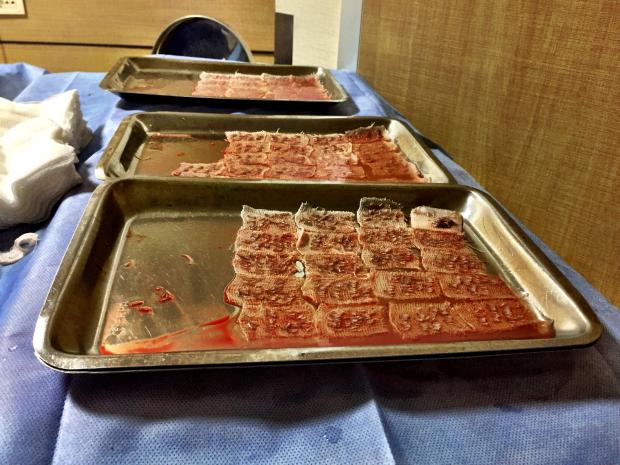
As a long-time member and teaching contributor of the ISHRS, Dr.U, who specializes in repairing poor hair transplant results, is well aware of the damages that can result from unscrupulous hair transplant practices, including those resulting from the FUE black market.
He recognizes the mantle of authority and leadership provided by the ISHRS. He upholds the belief that the organization stands in an excellent position to effectively inhibit the growth and activities of black market pirate clinics while making a big difference for patients. While the ISHRS cannot govern or enforce standards for every practicing clinic worldwide, the organization can regulate what its members can and cannot do.
Defining Safe Limits for FUE Donor Graft Quantities Harvested In A Single Procedure
Some clinics boast the offering of harvesting as many as 5,000 grafts in a day and even more significant quantities. Many patients who travel abroad hope to have their procedures done quickly without extra expenditures to stay additional days for their operations. To these individuals, these types of claims can seem promising.
According to Dr.U, reasonable FUE procedures should not exceed the limit of 3,000 grafts in a day. For example, a patient in India died while undergoing a hair transplant procedure aimed at performing 9500 grafts in a single day. Multiple team members performed extractions and insertions simultaneously on multiple scalp zones to achieve this. This resulted in higher-than-average blood loss and excessive anesthesia being administered, which increased the level of toxicity that the patient was exposed to.
Furthermore, under such circumstances, it is not realistic to expect that a single doctor can thoroughly supervise the activities of each staff member. As noted earlier, many mistakes go unnoticed.
Dr. U also recommends that extractions be performed within different regions at different times to avoid the type of hazards resulting from this unfortunate example.
Defining How Many Surgeries A Doctor Can Supervise At One Time
The practice of assigning a single doctor to oversee multiple procedures simultaneously is not a sound safeguard against mistakes and health risks. Instead, Dr.U believes it is important to set tangible and realistic limits on how many surgeries a licensed physician can supervise at one time.
It is preferable to define these limits in terms of the number of procedures performed during the same day, not at the same time. The physician would then oversee the surgical proceedings for a single patient throughout the day.
According to Dr.U, three surgeries should be the maximum limit for the day. And two procedures would be considered the safest number to manage.
Banning the Hair Transplant Practice of Having Multiple Patient Procedures Performed In the Same Room
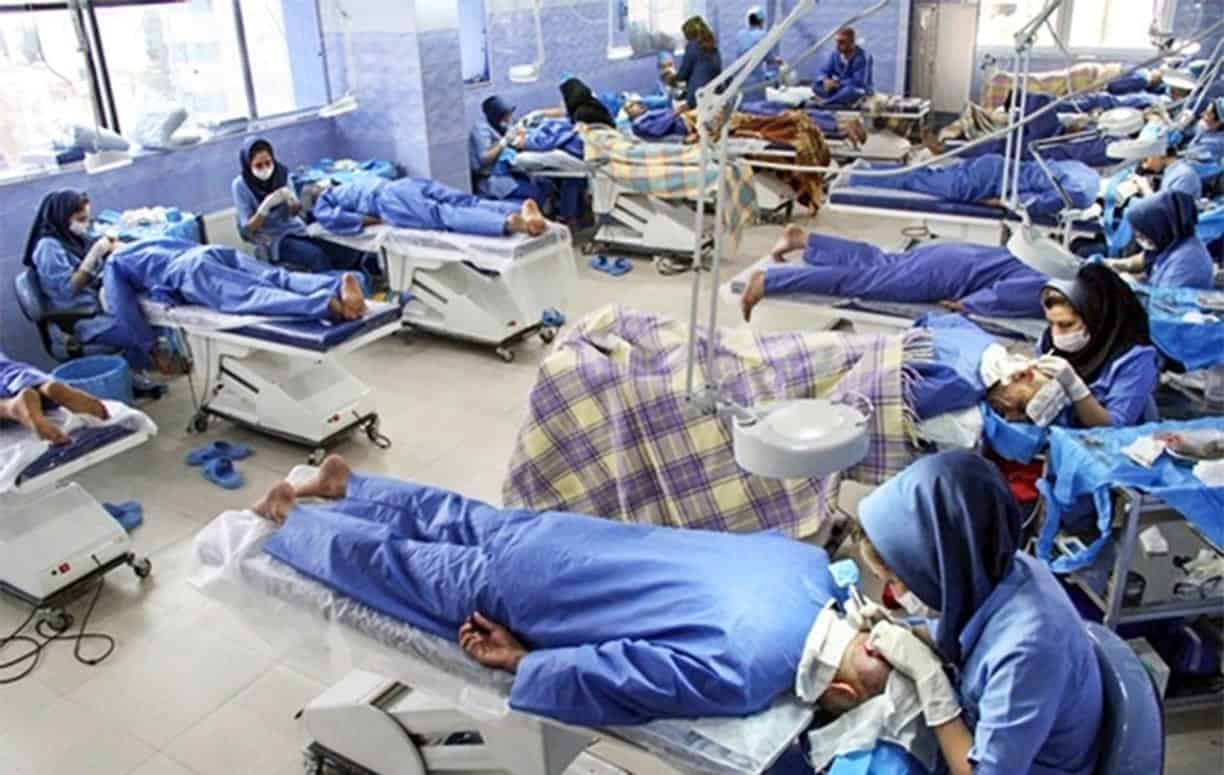
Clinic providers who perform hair transplants in an assembly line fashion often focus on getting the most done within a given amount of time. However, this has resulted in the practice of performing surgeries on several patients at once in the same room. While curtains are sometimes provided to create more privacy and separation, this does not protect against unsanitary conditions, such as transmitting infectious pathogens like bacteria, viruses, and other microbes.
Specifying a Minimum Threshold of Qualifications for Licensed, Non-Doctors Involved Directly in Patient Hair Transplant Surgeries
Under no circumstances should clinic providers hire unskilled laborers with no recognized medical certifications to perform hair transplant surgeries on patients. To help limit these proceedings, Dr. U encourages the ISHRS to define specific, minimal level qualifications required for a non-doctor to perform any aspect of FUE hair transplant surgery.
If you are interested in asking Dr.U additional questions about hair transplant patient safety or preventing the risks associated with low-cost surgeries, click the Ask Dr.U button below.
Frequently Asked Questions – FUE Hair Transplant Black Market
What is the difference between choosing medical tourism for low-cost hair transplants versus hair transplant black market clinics?
In both cases, the incentive to travel to other countries for hair restoration surgery is to pay much lower costs. While clinics that operate black market FUE practices lead patients to believe that they are under a doctor’s care, the staff members who perform these surgeries do not have licensed certified medical training. Prospective patients are highly encouraged to look more thoroughly into any provider they are considering to verify the credentials and the actual staff members who will perform the extractions, create the insertion slits, and place the grafts. It will also be essential to determine whether or not certifications presented or claimed are recognized.
What can patients do if they end up with botched hair transplant mistakes due to traveling abroad?
Patients traveling to other countries may experience difficulties obtaining legal protection or redress for botched hair transplant outcomes. They will likely require additional repair surgery to conceal the errors made. In cases where the head donor supply has been exhausted, the use of body hair (if available) should be considered as an additional resource. But this is a highly specialized area of practice within the hair transplant field. It requires more advanced instrumentation, which, like the Dr.UGraft ™ system developed at our clinic, offers specific capabilities which truly consider the actual requirements needed to harvest body hair as viable grafts safely.
What are some options that patients should consider in choosing cost-effective options for hair transplant surgery?
While the average cost of hair transplant surgery is considered high by many people, quality, safety, and long-term satisfaction should be prioritized. Choosing a hair transplant black market entails enormous health risks. Other options can be taken as a safer route. To help manage costs, patients can consider the option of choosing a feasible finance plan with reasonable interest rates and monthly payments. Also, the number of grafts harvested and placed can be divided into multiple procedures, scheduled over time to minimize the cost of each surgery. It is certainly possible to optimize the use of a conservative graft count to improve the appearance of coverage and undergo additional surgeries over time to enhance these results further.
Further Reading




